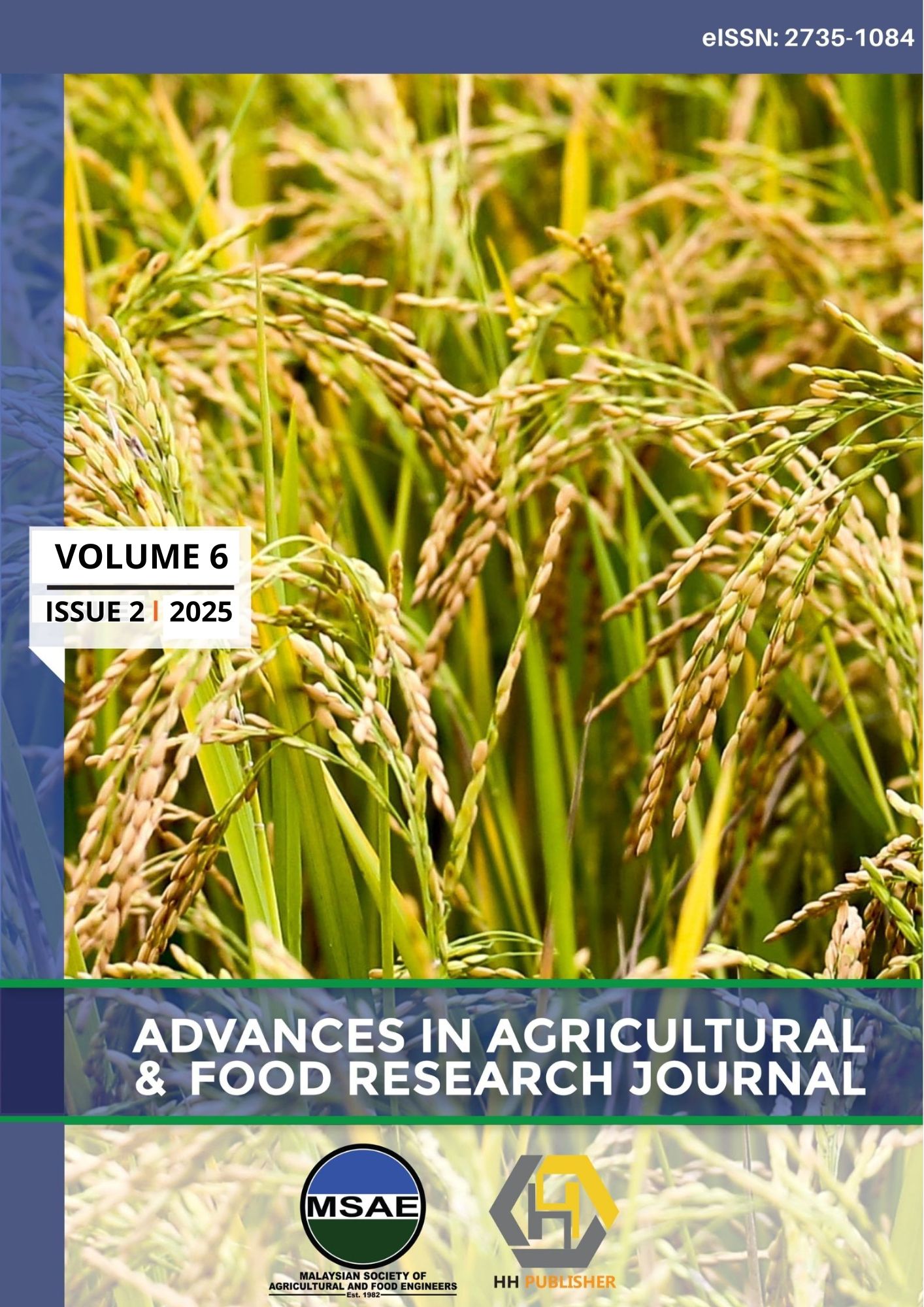Development of Durian Seed Powder as a Cocoa Flavour Substitute through Microbial Fermentation
DOI:
https://doi.org/10.36877/aafrj.a0000594Abstract
The seeds of Durio zibethinus, or durian seeds, being an underutilised waste product have been shown to have the potential of producing a chocolate aroma when they have undergone fermentation treatment. However, to date, producing a good cocoa substitute from durian seeds has not been given much attention due to issues with the taste and method of production. This study was conducted to determine a viable method for producing a flavour substitute for cocoa powder through the fermentation of durian seeds, and subsequently, to characterise the produced substance. Durian seed powder (DSP) was prepared by fermenting the seeds with fruit pulps in a 14-day fermentation, after which the seeds were dried under different time durations, and then roasted to a moisture content of 5% before grinding. Characterisation of DSP showed a composition of moisture, ash, crude fat, and carbohydrate that was dissimilar to cocoa, but with the crude protein content close to that of cocoa (11.18%). Appearance-wise, colorimetric analysis showed that longer roasting time of the seeds resulted in a closer appearance to commercial cocoa powder. The average theobromine content was found to be 14.496 mg/ml, which is within the expected range in cocoa powder. On sensory evaluation, 25 randomly selected panellists’ taste-tested the sample powder mixed with varying degrees of sugar and cocoa powder. The results showed that DSP has the potential to substitute for cocoa powder to a certain extent. Finally, a SuperPro Designer simulation was performed to gauge the economic viability of DSP production, where the estimated cycle time of at least 16 days per batch was indicated.
Downloads
Published
How to Cite
Issue
Section
License
Copyright (c) 2025 Charmaine Xiang Lin Chew, Azhari Samsu Baharuddin, Nor Amaiza Mohd Amin, Farah Nadia Omar

This work is licensed under a Creative Commons Attribution-NonCommercial 4.0 International License.
Author(s) shall retain the copyright of their work and grant the Journal/Publisher right for the first publication with the work simultaneously licensed under:
Creative Commons Attribution-NonCommercial 4.0 International (CC BY-NC 4.0). This license allows for the copying, distribution and transmission of the work, provided the correct attribution of the original creator is stated. Adaptation and remixing are also permitted.

This broad license intends to facilitate free access to, as well as the unrestricted reuse of, original works of all types for non-commercial purposes.
The author(s) permits HH Publisher to publish this article that has not been submitted elsewhere.

.png)

.jpg)



